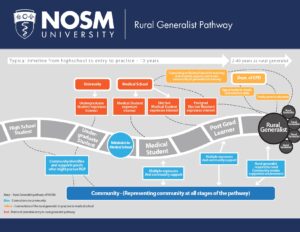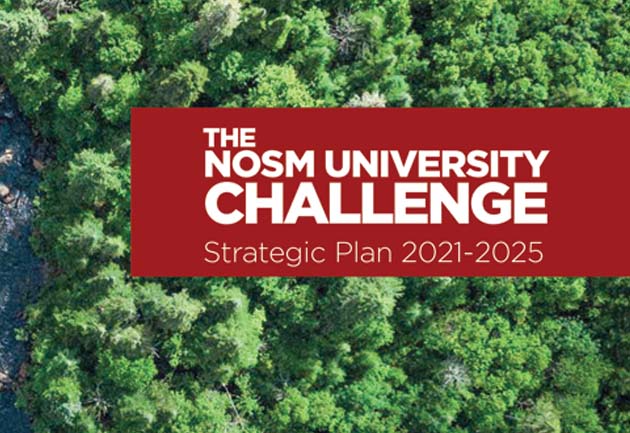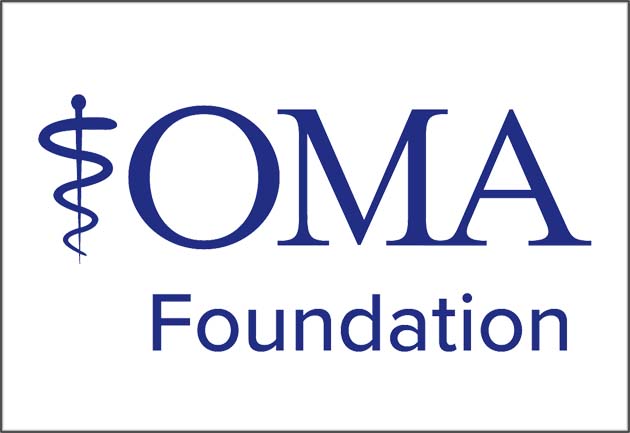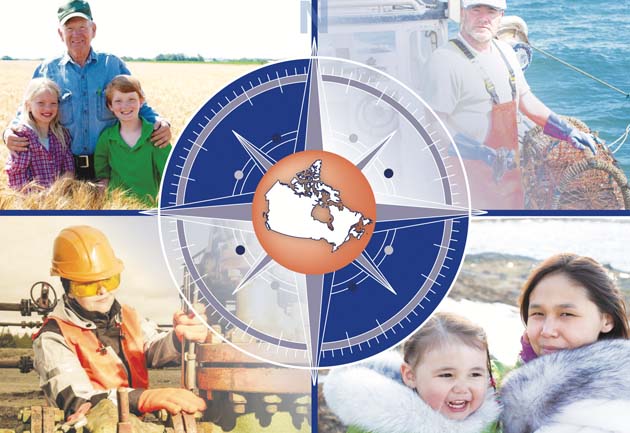
The overarching goal of the Rural Generalist Pathway is to align medical training with community need and create a career for physicians that is appealing in the short and long term. Moreover, to build and support a robust rural generalist workforce for our Northern Ontario communities as part of the overall physician workforce strategy for Northern Ontario.
NOSM University’s first Strategic Priority is Transforming Health Human Resource Planning. NOSM University’s aspiration in this strategic priority is to include “a transformative approach to the planning and delivery of workforce supply which eliminates the gaps in Northern Ontario Health Human Resources.”
And we do have gaps. Currently, across Northern Ontario we need over 200 family physicians, mainly in our rural communities. See the data.
Despite NOSM University’s presence and success, we need to continue to innovate in education to support communities in reaching the physician resources that they need. NOSM University’s third Strategic Priority is Innovate Health Professions Education. We hope to be recognized across Northern Ontario for developing innovative models of education in Northern, Indigenous, Francophone, rural and remote medicine that lead to well trained health-care practitioners who stay in the communities of the North.
In the fall of 2021, the first cohort of 5 students entered the Rural Generalist Pathway in undergraduate medical education and 6 more students entered in the fall of 2022. Although the full-pathway from high school to practice as a rural generalist is aspirational, we are working to ensure that by 2025, a fulsome pathway will be realized through incremental changes in each portfolio; a pathway that will allow learners to imagine for themselves a successful career with a rural generalist start.
What is a Rural Generalist?
The formal definition of Rural Generalist Medicine is in the Cairns Consensus Statement below:
Rural Generalist Medicine is described as the provision of a broad scope of medical care by a doctor in the rural context that encompasses the following:
- Comprehensive primary care for individuals, families and communities;
- Hospital in-patient and/or related secondary medical care in the institutional, home or ambulatory setting;
- Emergency care;
- Extended and evolving service in one or more areas of focused cognitive and/or procedural practice as required to sustain needed health services locally among a network of colleagues;
- A population health approach that is relevant to the community;
- Working as part of a multi-professional and multi-disciplinary team of colleagues, both local and distant, to provide services within a ‘system of care’ that is aligned and responsive to community needs.
– Cairns Consensus Statement (2014)
Summit North and the Northern Physician Resources Advisory Introduction
January 24, 2018, in response to an urgent need for action, the Northern Ontario School of Medicine, Health Force Ontario Marketing and Recruitment Agency and the Northeast and Northwest Local Health Integration Networks joined forces to host Summit North: Building a Flourishing Physician Workforce.
Summit North was held in Thunder Bay and brought together over 125 stakeholders from across Northern Ontario including municipalities, Indigenous and Francophone communities, Health Service Providers (hospitals, family health teams), physicians, educators, administrators, policy makers, and others. Participants spent the day identifying and gathering innovative ideas and strategies that could be considered to help solve ongoing challenges with physician recruitment and retention in the North.
Following Summit North, the Northern Physician Resources Task Force (NPRTF) was created to ensure that a summary report would be finalized and that the actions from the Summit would be realized and momentum sustained across Northern Ontario.
The NPRTF oversaw the development of the Northern Physician Resources Action Plan, and has overseen the implementation of several recommendations.
One of the recommendations was to develop a model for rural Northern Ontario, based on the success of rural physician resource development in Queensland Australia. To that end, Dr. Denis Lennox visited several communities in Northern Ontario and met with several partner organizations like the OMA to help create a model that could be developed here.
In March of 2020, a new position at NOSM was launched – the Associate Dean of Physician Workforce Strategy – and work on the implementation of the Rural Generalist Pathway was begun.
Summit North Documents and Information
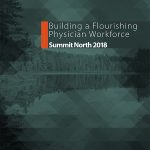 Building a Flourishing Physician Workforce – Summit North 2018
Building a Flourishing Physician Workforce – Summit North 2018
Download the Executive Summary
Other Documents
Summit North Resources
1. HQO data/performance metrics for Northern Ontario
This is an online report that provides background information on the geography and key health statistics across Northern Ontario. Population perspectives of Francophone, First Nations and Métis peoples are also highlighted.
2. Rural Road Map for Action
With the goal of supporting a robust family physician rural workforce, the College of Family Physicians of Canada and the Society of Rural Physicians of Canada created this document through broad consultation, literature reviews and background research. It provides 4 broad directions, and 20 specific actions.
The Road Map for Action uses a social accountability framework and outlines roles for the WHO five key Social Accountability partners: health care professionals, policy makers, health and education administrators, universities and communities. Representatives from each partnership group attended Summit North.
3. Summit to Improve Health Care Access and Equity for rural Communities in Canada Final report July 2017
This document outlines the work done on February 22, 2017 to launch the Rural Road Map for Action. Here particular actions (from the 20 in the original report) are prioritized for geographic regions – see pages 9 and 10.
4. Documents produced since Summit North:
- The Making it Work Framework launched the year after Summit North and the tools on the site have been evolving ever since. This work has its own section on this site.
- The Northern Health Equity Strategy has been published by Health Quality Ontario and references to health human resources are found on page 21.
- Nishnawbe Aski Nation’s Transformation Summit document links are below:
On the day of the summit this presentation was shared by Dr. Denis Lennox and Dr. Roger Strasser.
Building a Flourishing Physician Workforce – Presentation
Making It Work Framework
The Making it Work Framework is a framework for rural health workforce recruitment and retention that was developed through a 7-year international partnership of circumpolar nations building investment recommendation and practical tools for administrators, supported by evidence and grounded in northern, rural and remote experience. The “The Recommender” on the Making it Work website for tools and how they are being applied in various places.
Past Communiqués
Contact Us
Contact Information
Office of Physician Workforce Strategy
Email: physicianworkforce@nosm.ca


